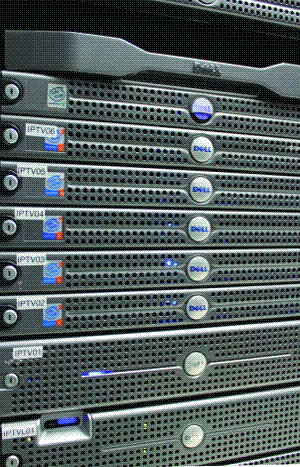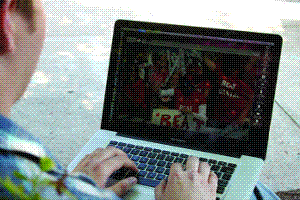Case Study: Wireless IPTV at Liberty University
In 2005 o ur media department, under the leadership of Mike Gerringer, director of technical production and media systems, and Charles Johnson, media system integrator, began looking for a cost-effective way to distribute television programming to Liberty University students throughout the campus. Satellite delivery was not an appealing option, as we did not want to attach satellite dishes to university buildings. Though cable delivery was a possibility, as each dormitory is wired for coaxial cable, we lacked a head-end to support cable service delivery. However, once we saw HaiVision's Furnace end-to-end IP video delivery system, we recognized that we could leverage our newly installed IT infrastructure to distribute live video simply and economically.
ur media department, under the leadership of Mike Gerringer, director of technical production and media systems, and Charles Johnson, media system integrator, began looking for a cost-effective way to distribute television programming to Liberty University students throughout the campus. Satellite delivery was not an appealing option, as we did not want to attach satellite dishes to university buildings. Though cable delivery was a possibility, as each dormitory is wired for coaxial cable, we lacked a head-end to support cable service delivery. However, once we saw HaiVision's Furnace end-to-end IP video delivery system, we recognized that we could leverage our newly installed IT infrastructure to distribute live video simply and economically.
Gerringer and Johnson chose the Furnace system in particular because of its ease of use, uniquely low maintenance requirements, and its flexibility in providing multicast services. Our university is the largest and fastest growing Christian Evangelical University in the world, with more than 60,000 resident and online students. We feel that HaiVision's advanced H.264 encoders provide a strong foundation for a migration to cost-effective, high-quality HD video delivery as we continue to grow, refine, and extend our IPTV service. Thus, after a successful pilot installation, we deployed a complete Furnace system, using HaiVision's "zero footprint" InStream player and Stingray set-top boxes to deliver 15 network broadcast, university, and special event channels-as well as a "visitor" video-on-demand channel-to computers and television displays across campus.
The Furnace system has allowed us to meet student demand for live TV in dorm rooms and public areas, where students and staff can tune in via set-top boxes resembling standard cable boxes. HaiVision's InStream player, a platform-independent desktop viewing technology, makes IP video available on connected student computers and laptops. Because the player is client/server-based, we don't have to deal with the hassle of installing or maintaining software on student computers. Features such as forward error correction and packet tagging help us to ensure the quality and security of each video stream.
 We have 20 public displays, ranging from 32" to 46" screens, installed across campus using the Stingray set-top box to provide video. By incorporating a third-party digital signage product into our production and distribution of video, we are able to feature a multiwindow display, each with closed captioning and as many as 12 channels shown on a single display. Every department can customize which channels are shown and how many are displayed on each of these public displays.
We have 20 public displays, ranging from 32" to 46" screens, installed across campus using the Stingray set-top box to provide video. By incorporating a third-party digital signage product into our production and distribution of video, we are able to feature a multiwindow display, each with closed captioning and as many as 12 channels shown on a single display. Every department can customize which channels are shown and how many are displayed on each of these public displays.
Our current installation includes six live Furnace servers and a portable unit that we use for video delivery from live venues. We added HaiVision's Makito encoder into the mix for a convocation service and were extremely impressed by the quality and performance of the system. The service was viewed by nearly 12,000 people, with about 3,000 of those watching on their laptops and from within other university venues on big screen displays.
We finished the initial deployment of the HaiVision Furnace IP video delivery system at our Lynchburg, Va., campus in 2005. Shortly thereafter, we built on this system through a second infrastructure upgrade. Following proof-of-concept deployments in campus dormitories, we went forward with a first-of-its-kind wireless IPTV upgrade that provided students with convenient "anywhere, anytime" access to multichannel video from any point on campus. We have built out wireless distribution of multichannel IPTV service over a new Aruba Networks high-speed 802.11n wireless LAN.
Today, we offer 750 access points throughout the campus, allowing our students to connect wirelessly while enjoying the same video quality they previously experienced with a wired connection. The system provides secure multicast video distribution, as well as instant access to live channels and recorded channels with video on demand.
By using HaiVision's Furnace system to minimize reliance on expensive coaxial and Ethernet cabling plants and leveraging 802.11n Wi-Fi everywhere possible, we have significantly enhanced students' access and mobility while reducing our capital and operating expenses.
Companies and Suppliers Mentioned